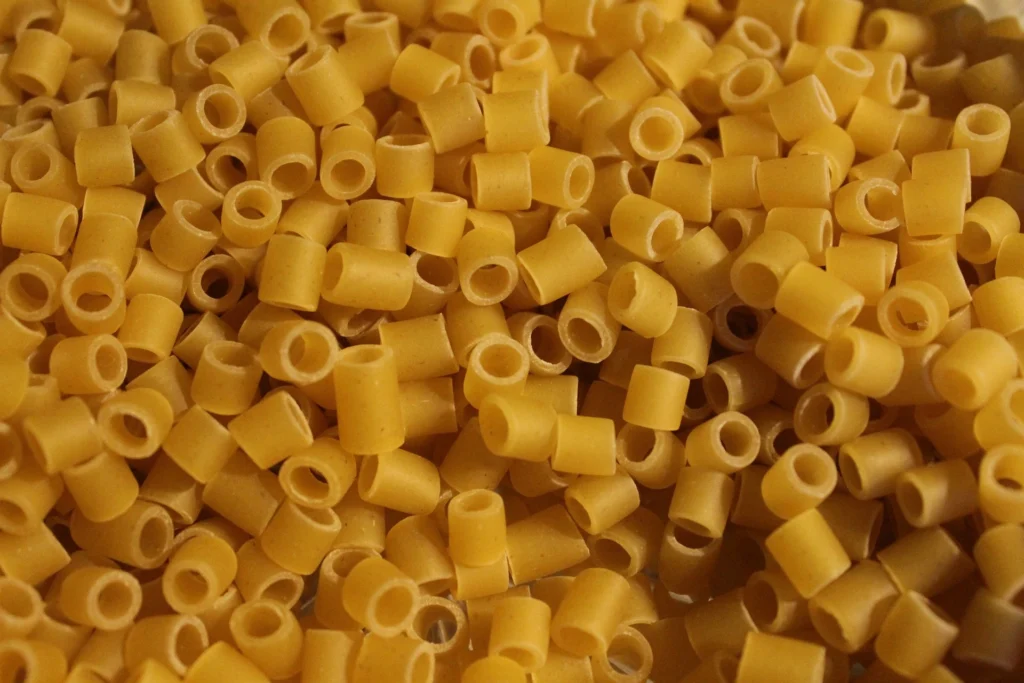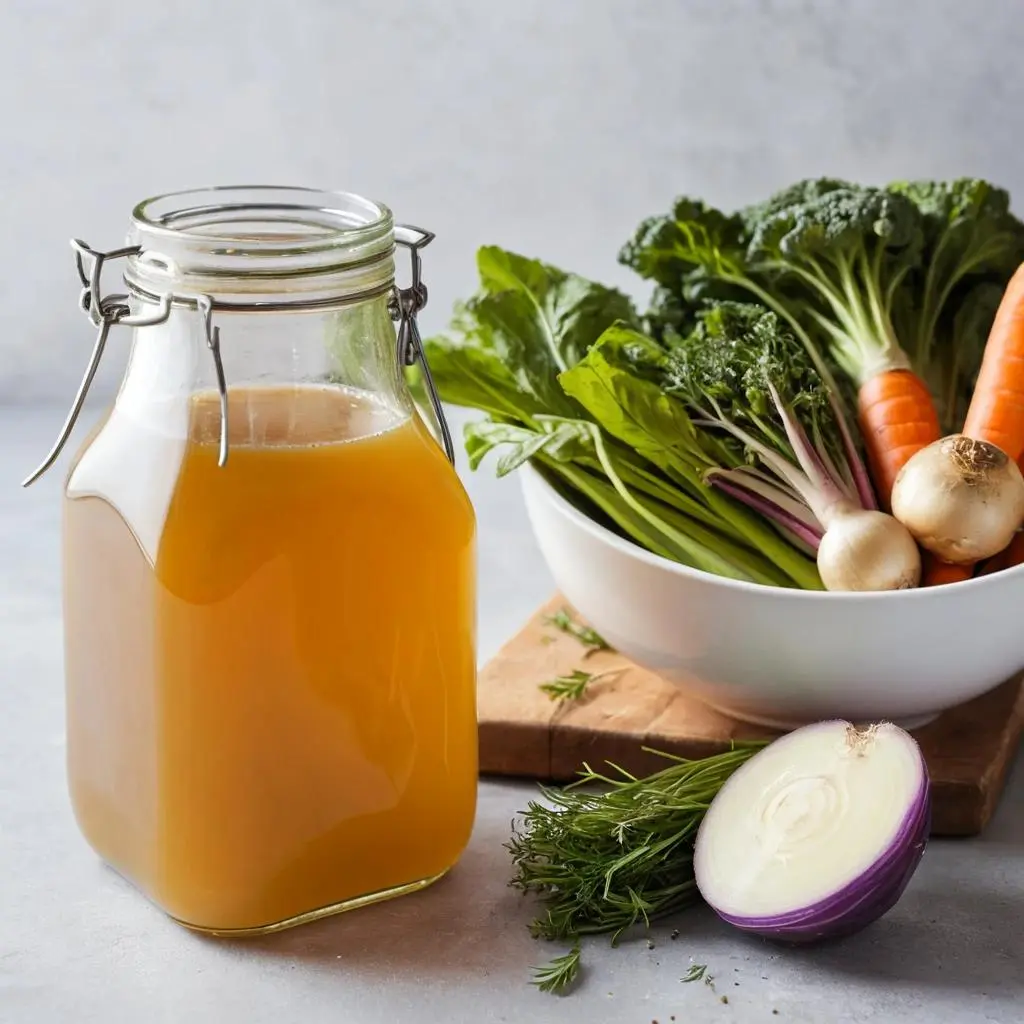Introduction
If you’re in the mood for a rich, creamy, and incredibly satisfying pasta dish, creamy ditalini pasta is the perfect choice. Imagine slurping up small, tubular pasta coated in a velvety, cheesy sauce that clings to every bite. The dish is simple to make, but its flavors are complex, comforting, and oh-so-delicious. Whether you’re feeding a crowd or treating yourself to a comforting solo meal, this creamy ditalini pasta will surely become a household favorite.
In this article, you’ll learn how to create a perfect creamy ditalini pasta from scratch, the essential tips for making it creamy and flavorful, and ways to customize it to suit your tastes. We’ll also dive into the nutritional benefits of this dish, answer some frequently asked questions, and explore why this simple yet indulgent meal is the ultimate comfort food.
Table of Contents
Ingredients for Creamy Ditalini Pasta
Before diving into the recipe, it’s essential to gather all the ingredients that will bring your creamy ditalini pasta to life. The beauty of this dish is that it uses just a few simple ingredients, but each one plays a vital role in achieving the perfect creamy, cheesy sauce that coats the small pasta perfectly.
The Key Ingredients
Here’s what you’ll need:
| Ingredient | Amount |
|---|---|
| Ditalini pasta | 1 lb (450g) |
| Heavy cream | 1 cup (240ml) |
| Parmesan cheese (grated) | ½ cup (50g) |
| Garlic (minced) | 3 cloves |
| Olive oil | 2 tbsp |
| Butter | 2 tbsp |
| Vegetable broth | 1 cup (240ml) |
| Salt and pepper | To taste |
| Fresh basil (optional) | 1 tbsp (chopped) |
Why These Ingredients Work So Well Together
- Ditalini pasta: This small, tube-shaped pasta is the perfect size for soaking up creamy sauces, giving you a satisfying bite with every spoonful.
- Heavy cream: The heart of the creamy sauce, heavy cream gives the dish its rich and smooth texture. If you want a lighter version, you can substitute with half-and-half or even coconut cream for a dairy-free option.
- Parmesan cheese: This brings a salty, umami-rich flavor to the dish, helping balance out the creaminess and adding depth to the overall taste.
- Garlic: Adds an aromatic and savory layer of flavor that makes the dish more aromatic and savory.
- Olive oil and butter: Both of these ingredients contribute to the sauce’s silky, smooth texture while also infusing it with rich flavor.
- Vegetable broth: A mild, savory base for the sauce that complements the other ingredients without overpowering the flavors.





Step-by-Step Instructions
Now that you have your ingredients ready, let’s walk through the steps for creating the perfect creamy ditalini pasta. The key to getting it just right is following each step carefully, so your pasta is coated with a luscious, creamy sauce.
Step 1: Boil the Ditalini Pasta
Start by boiling a large pot of salted water until it reaches a rolling boil. Be sure to salt the water generously—this is your best opportunity to season the pasta directly. As soon as the water reaches a boil, add the ditalini pasta. Stir from time to time to avoid the pasta sticking.
Cook the pasta according to the package instructions (usually about 8 to 10 minutes) or until al dente. Ditalini pasta should still have a slight bite to it, so don’t overcook. Once the pasta is ready, drain it in a colander, but make sure to reserve at least one cup of the pasta cooking water. This starchy water will be crucial for adjusting the sauce’s consistency later.
Step 2: Prepare the Creamy Sauce
As your pasta cooks, you can prepare the sauce. Start by warming olive oil and butter in a large skillet over medium heat. After the butter melts and the oil becomes shiny, stir in the minced garlic. Sauté the garlic for about 1 minute until it’s fragrant, being careful not to let it brown or burn.
Then, pour in the vegetable broth and let it come to a simmer. Allow it to cook for about 2 to 3 minutes. This allows the broth to reduce slightly, intensifying the flavors. Then, pour in the heavy cream and stir the mixture. Let it simmer for another 2 to 3 minutes until it thickens up slightly.
After the sauce thickens, mix in the grated parmesan cheese. Keep stirring until the cheese has fully melted and the sauce has become smooth and creamy. If the sauce seems too thick, gradually add a little of the reserved pasta water until you reach your desired consistency.
Step 3: Combine the Pasta and Sauce
Now comes the fun part: combining the creamy sauce with the ditalini pasta. Add the drained pasta directly into the skillet with the creamy sauce. Carefully toss the pasta to coat it uniformly with the sauce.
If the sauce seems too thick, you can add more of the reserved pasta water, a little at a time, until it’s perfectly creamy and clings to the pasta. Season with salt and pepper to taste. For an added burst of flavor, sprinkle some fresh chopped basil on top of the pasta.
How to Make the Creamy Sauce for Ditalini Pasta
The creamy sauce is the heart and soul of this dish, so let’s take a closer look at how to make it perfectly every time.
Essential Ingredients for the Sauce
As you’ve already seen, the base of the creamy sauce is a combination of heavy cream, butter, olive oil, and parmesan cheese. These ingredients are key to achieving a rich, creamy texture that coats every piece of ditalini pasta.
- Heavy cream: This is the main ingredient that provides the sauce with its smooth texture. You can use full-fat cream for the richest flavor, or go for a lighter version if you’re looking to reduce the calories. For a dairy-free version, coconut cream or almond milk works as a good substitute.
- Butter: Contributes richness and a smooth texture to the sauce.
- Parmesan cheese: A crucial component that provides the depth of flavor and creaminess. Freshly grated parmesan will melt better and taste fresher than pre-grated cheese.
- Garlic: Garlic doesn’t just add flavor; it enhances the entire dish by bringing aromatic depth to the sauce.
The Key to the Perfect Creamy Consistency
To ensure your sauce is perfectly creamy, avoid boiling it on high heat. Instead, simmer it gently. This stops the cream from separating or curdling. Gradually whisk in the parmesan cheese once the sauce is thickened to avoid clumps. The pasta water you saved earlier will be your secret weapon for adjusting the sauce’s consistency. Don’t rush this step—take your time to get the perfect silky texture.
Tips for Perfecting Creamy Ditalini Pasta
Now that you know how to make creamy ditalini pasta, here are some expert tips to ensure it turns out perfectly every time:
- Don’t Skip the Pasta Water: Pasta water is your best friend when it comes to achieving the ideal sauce consistency. The starch in the water helps the sauce cling to the pasta and gives it a smoother, silkier texture.
- Use Fresh Parmesan: For the best flavor and texture, use freshly grated parmesan cheese. Pre-grated cheese typically contains anti-caking agents, making it harder to melt smoothly.
- Customize with Vegetables: Want to add some extra veggies to your dish? Creamy ditalini pasta pairs perfectly with spinach, peas, or even roasted tomatoes.
- Add Protein: If you’re craving some protein, grilled chicken, bacon, or shrimp can be easily added to the dish to make it a more filling meal.
- Experiment with Herbs: Fresh basil, thyme, or oregano can all complement the flavors of this pasta and give it a fresh, herbal twist.
Nutrition Facts for Creamy Ditalini Pasta
Understanding the nutritional breakdown of creamy ditalini pasta can help you make more informed choices. Here’s an estimated nutritional breakdown for a typical serving of creamy ditalini pasta (based on 4 servings):
| Nutrient | Amount (Per Serving) |
|---|---|
| Calories | 450 kcal |
| Carbohydrates | 55g |
| Protein | 10g |
| Fat | 22g |
| Saturated Fat | 12g |
| Fiber | 2g |
| Sodium | 550mg |
Please note: Nutritional values may differ based on the ingredients used and portion sizes. To reduce the calorie count, consider using lighter cream or fewer cheeses.
Frequently Asked Questions (FAQs)
Can I replace the ditalini pasta with a different shape in this recipe?
Yes! If you don’t have ditalini pasta, other small pasta types like elbow macaroni, orecchiette, or mini penne would work just as well. The key is to use a pasta shape that can hold a generous amount of creamy sauce.
How can I make this recipe dairy-free?
You can make this creamy ditalini pasta dairy-free by using plant-based cream alternatives, such as coconut cream or almond milk, and replacing parmesan cheese with dairy-free cheese or nutritional yeast for a cheesy flavor.
Can I make creamy ditalini pasta ahead of time?
Yes, you can prepare the sauce ahead of time and keep it in the refrigerator for up to 2 days. When you’re ready to serve, just heat the sauce and mix in the cooked pasta. The pasta might absorb some of the sauce, so you may need to add a little pasta water to restore the creamy texture.
Can I add more flavor to the sauce?
Definitely! YYou have the option to try different herbs and spices. Fresh thyme, oregano, or even a pinch of red pepper flakes can elevate the flavor profile of your creamy sauce.
Conclusion
With the recipe for creamy ditalini pasta in hand, it’s time to get started in the kitchen! This simple yet indulgent pasta recipe is perfect for a cozy weeknight dinner, and with just a few basic ingredients, it’s easy to prepare. Whether you decide to add more vegetables, protein, or herbs, this dish is flexible enough to satisfy any craving.
So gather your ingredients, follow the instructions, and indulge in a bowl of creamy, comforting pasta that will leave you satisfied with every bite.
Don’t forget to share this recipe with your friends and family, and let us know how it turns out! Happy cooking!


1 thought on “How to Make the best Creamy Ditalini Pasta Dish”